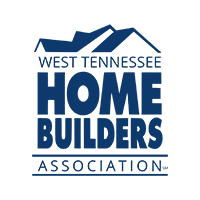NAHB’s latest resource on inclusionary zoning is now available. Prepared by Hinckley, Allen & Snyder LLP, “Policy, Practical, and Legal Challenges to Inclusionary Zoning: A Resource Manual for NAHB Members” provides a list of policy, practical and legal strategies that NAHB members may adopt when dealing with inclusionary zoning proposals, as well as an accessible guide to state statutory and case law authority for municipal or county governments to enact inclusionary zoning ordinances.
“Inclusionary zoning” is defined as any municipal or county ordinance that requires or allows a property owner, builder or developer to restrict the sale or resale price or rent of a specified percentage of residential units in a development as a condition of receiving permission to construct that development. This definition covers both voluntary inclusionary programs — in which the owner/builder/developer has an option to impose price restrictions, usually in return for certain incentives — and mandatory programs — in which the price or rent restrictions are a condition of approval. This definition also includes ordinances that allow payment of a fee as a way to opt out of an inclusionary program.
The primary focus of this paper is state laws and municipal or county ordinances that constitute government intervention in the housing market by imposing limits on maximum rent or price on a certain percentage of proposed residential units.
This report is divided into four parts:
- Research Summary, which explains the methodology;
- Policy, Practical and Legal Challenges to Inclusionary Zoning Proposals;
- 50 State Survey; and
- A list of selected articles and ordinances.
The 50 State Survey — which provides an update to a 2007 report — examines inclusionary zoning statutes, regulations and cases, if any, in each state. To the extent possible, a description of each state's constitutional or statutory home rule or municipal powers provision is included — which, absent an express statute or regulation, is a key determinant of whether a municipality or county has the authority to enact an inclusionary zoning ordinance.
According to the survey of state law:
- Fifteen states have statutes or regulations that either expressly authorize inclusionary zoning (using the actual words “inclusionary zoning”) or clearly imply such authority by granting broad powers to promote affordable housing;
- Sixteen states have no express authorization for inclusionary zoning, but one or more major municipalities in the state law have adopted inclusionary zoning programs, some of which are voluntary;
- Four states (Arizona, Montana, Oregon and Texas) prohibit inclusionary zoning by statute in some way; and
- In the remaining 15 states, there is no express or implied authorization or prohibition.
State-by-state summaries provide more specific information.
The full report, as well as additional inclusionary zoning resources, is available through NAHB’s Land Use 101 toolkit.
